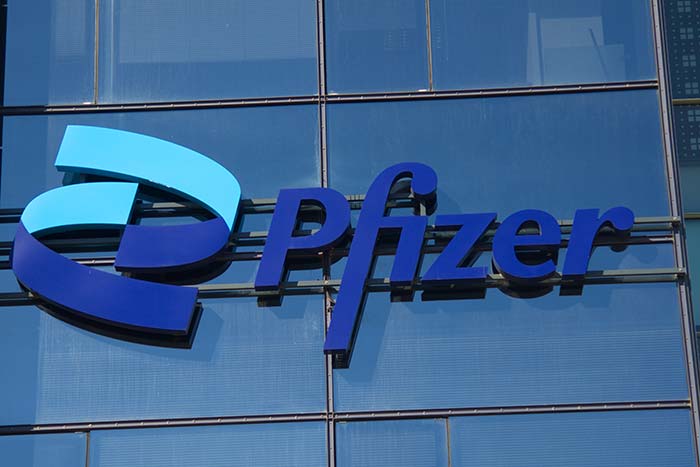In The Oxford Clubroom a few weeks ago, I was asked for my thoughts on Pfizer (NYSE: PFE), which has a huge yield for a blue chip company.
I mentioned that I think the stock is a value trap, as earnings are projected to fall over the next 10 years. The stock has been a dog for 3 1/2 years since reaching its all-time high in late 2021. Today, it trades at less than half that level.
Nevertheless, it’s easy to understand why income investors are interested in Pfizer. With a current yield of 7.1%, it’s one of the highest-yielding stocks in the S&P 500.
Let’s dig into the dividend and see whether it’s in any better shape than the stock.
From a cash flow perspective, Pfizer is a victim of its own success. The COVID-19 vaccine generated huge amounts of free cash flow in 2021 and 2022. Since then, the company’s cash flow has evaporated.
After hitting a peak of $29.9 billion in 2021, free cash flow plummeted to just $4.8 billion in 2023.
Last year, free cash flow more than doubled to $9.8 billion, but that was still lower than any year in the past decade other than 2023. This year, it is forecast to grow sharply again to $17.7 billion.
While this year’s free cash flow is projected to jump from last year’s and be higher than any non-pandemic year’s, the dividend safety rating gets a penalty because of the negative three-year growth. Next year, that will change when the 2022 vaccine windfall ages out of the model. But for now, it lowers the dividend safety by one notch.
Another issue is last year’s payout ratio. Pfizer paid shareholders $9.5 billion in dividends out of its $9.8 billion in free cash flow. A 97% payout ratio is too high.
However, because of this year’s anticipated free cash flow growth, the payout ratio is expected to shrink to a more comfortable 54%.
After cutting its dividend in half during the global financial crisis, Pfizer has raised its dividend every year since 2010. That 16-year streak earns the company a bonus point.
If Pfizer is able to deliver anything close to the cash flow numbers that are forecast for 2025, its dividend should be considered safe. However, a repeat of 2024 would mean the payout ratio would be too high once again, and that would put the dividend at risk.
But for now, the probability of a dividend cut is low.
The dividend appears to be in better shape than the stock.
Dividend Safety Rating: B

What stock’s dividend safety would you like me to analyze next? Leave the ticker in the comments section.
You can also take a look to see whether we’ve written about your favorite stock recently. Just click on the word “Search” at the top right part of the Wealthy Retirement homepage, type in the company name, and hit “Enter.”
Also, keep in mind that Safety Net can analyze only individual stocks, not exchange-traded funds, mutual funds, or closed-end funds.


Please review SAR
How about KSS Kohls currently paying 6.72%
irm
Cash flow coverage for DOW dividend
Please check the dividend safety of (LYB). Thanks.
Please review MDT.
Please evaluate KOF, Coca-Cola FEMA
DIV SCORE FOR flng. Thanks
QYLD
Safety Net can only analyze the dividend safety of individual stocks, not ETFs or funds.
ET
APA
IRM